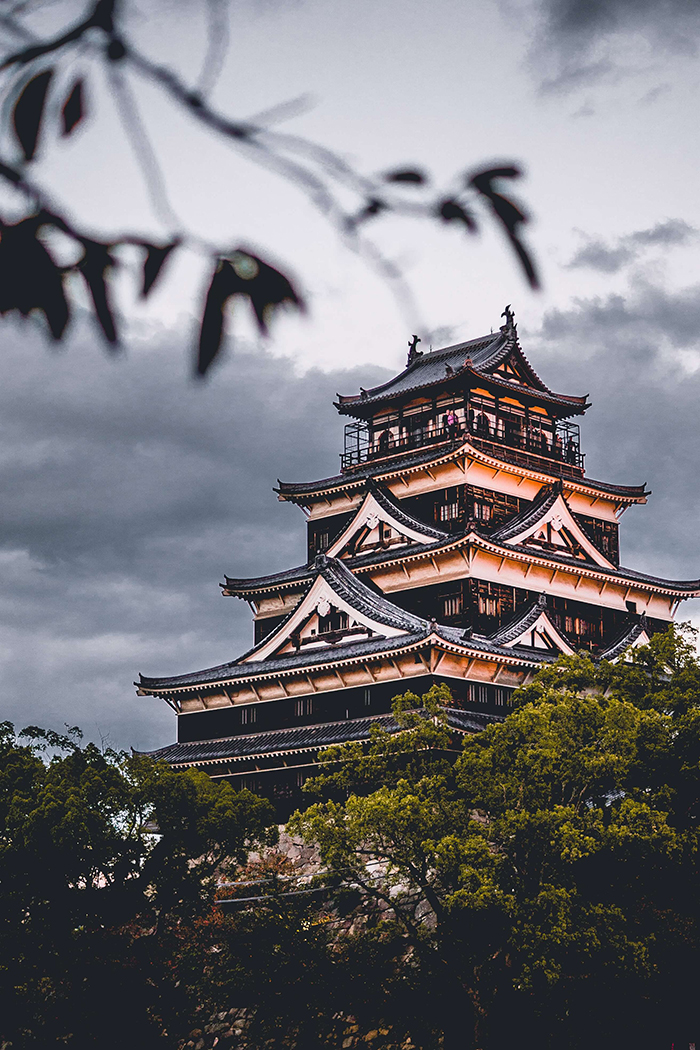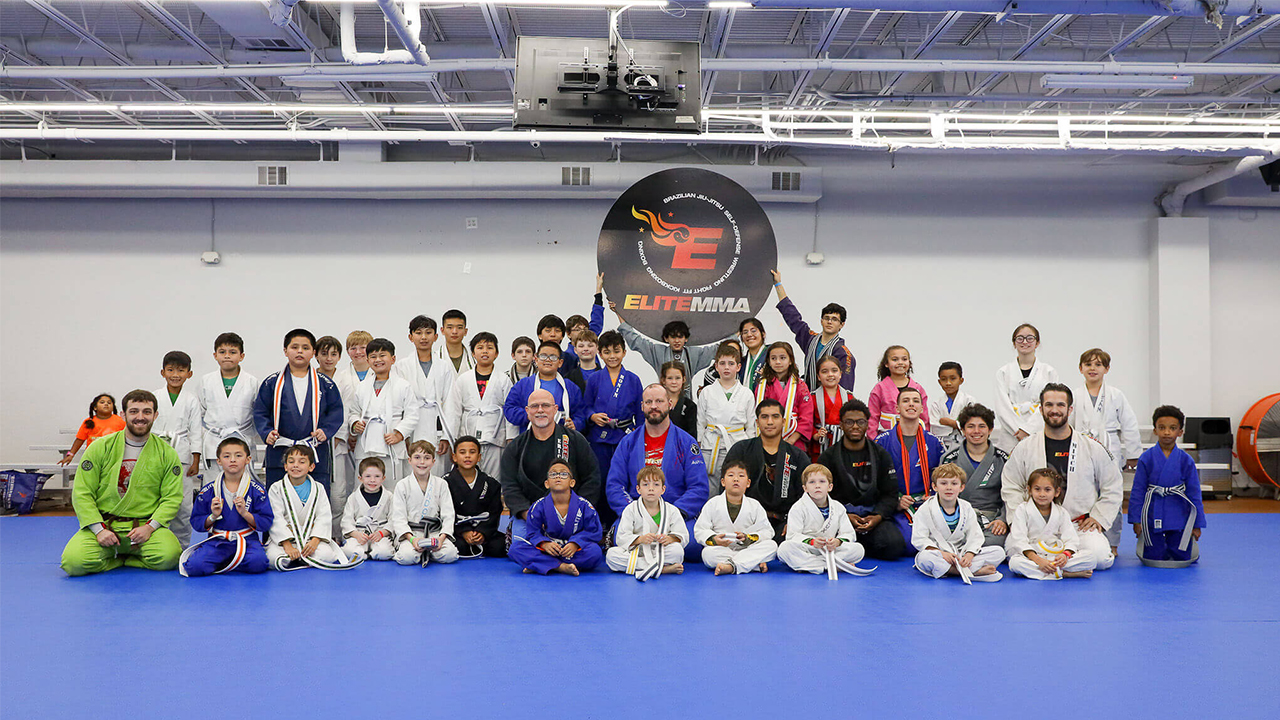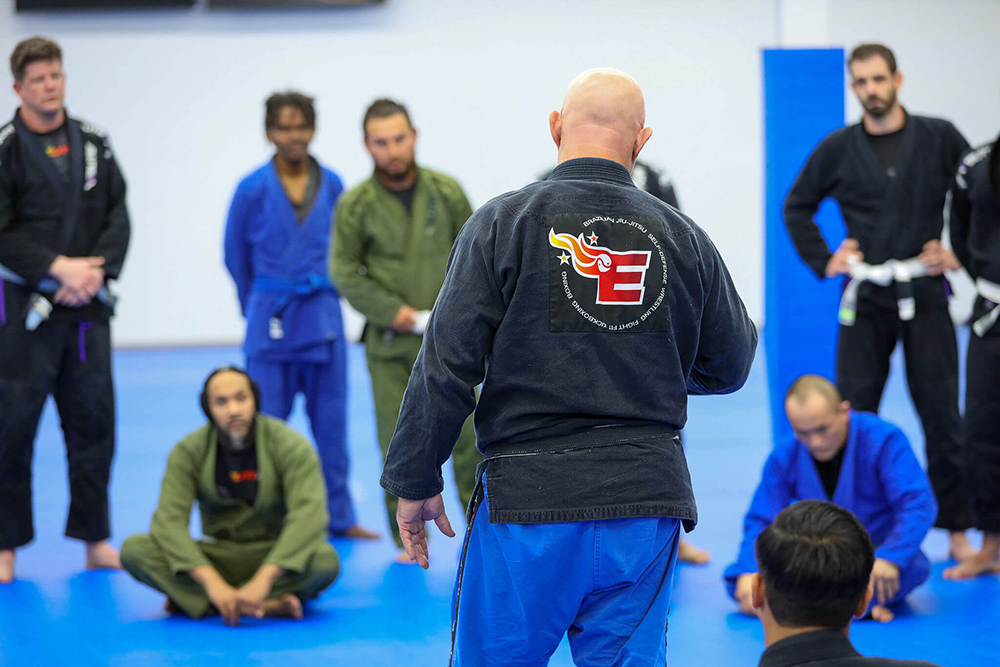Brazilian jiu-jitsu is one of many Houston martial arts you can study. There are several different types of jiu-jitsu, but the most popular is BJJ. If you have an interest in martial arts but don’t participate yet, you may have many questions. You may have been asking yourself, “Where can I learn Brazilian jiu-jitsu near me?” or “How did a Japanese martial art take on such strong associations with a South American country?”
Japanese Origins

Brazilian Dominance
Jiu-jitsu first came to Brazil in the early 20th century via a Japanese martial arts champion. His name was Mitsuyo Maeda, and he had a friend in Brazil named Gastao Gracie. Maeda agreed to instruct his friend’s oldest son Carlos in jiu-jitsu. Carlos had four brothers and instructed each in the techniques he had learned from Maeda. Together, the four brothers opened a jiu-jitsu academy, the first of its kind in Brazil, in 1925.
The Gracie brothers not only instructed others in the techniques that they learned but continue to improve on them. Helio Gracie was instrumental in developing methods that help a shorter, smaller opponent prevail against a larger one. As a man of relatively diminutive stature, he did this to improve his own chances at victory, especially against his brothers, who were all larger than him.
For a time, the Gracie brothers were united in their passion for jiu-jitsu. Unfortunately, however, a rift developed between Helio and Carlos. Though the love for the art continued, each began developing his methods for practicing it and teaching it to others. While Carlos’ branch of the family tree endeavored to establish jiu-jitsu more firmly in Brazil, founding the Confederacao Brasiliera in 1993, Helio’s branch set their sights on another country.
American Popularity
Helio’s sons Rorion and Royce hoped to expand Brazilian jiu-jitsu in the United States in the early 1990s. The timing was excellent because around the same time, an entrepreneur named Art Davie had an interest in creating an eight-man single-elimination tournament that eventually became the Ultimate Fighting Championship. He proposed the idea to Rorion Gracie, who became a UFC co-founder. Using the techniques that he learned from his father, Royce Gracie competed in the premiere Ultimate Fighting Championship and won against fighters who were not only experts in other martial arts disciplines but also noticeably bigger than him. In the early days, UFC didn’t have weight classes as it does now.
UFC brought Brazilian jiu-jitsu into the public consciousness. Since that time, the sport has slowly increased in popularity, not only throughout the United States but around the world. It has taken several decades for it to rise to prominence, however. As recently as 20 years ago, most people still were not familiar with it. Although it’s now on the radar of many more people, compared to the general population, only a few practice it.
In the past, Brazilian jiu-jitsu lacked efficiency and safety. However, increased popularity has resulted in codification of the rules and governing bodies to enforce regulations and protect competitors. While some lament the loss of the “underground” feeling, the greater organization has led to more focused and professional training, which has led to more skilled competitors and more systematic techniques.
Future Evolution
Ever since Mitsuyo Maeda first instructed the Gracie brothers in the traditional Japanese martial art, Brazilian jiu-jitsu has continuously evolved until this day. The current trend is toward a “neo-jiu jitsu,” which combines elements of all different types of grappling sports. Nevertheless, trends in the sport of jiu-jitsu tend to be cyclical, with different strategies and techniques falling out of fashion only to regain prominence within a few years.
Brazilian Jiu-Jitsu Is One of Elite MMA Houston’s Program
If you’re interested in learning Brazilian jiu-jitsu in Houston after reading this, check out Elite MMA. We offer BJJ programs for men, women, and children.

